To prevent future sagging, regularly tighten the hinges, control the humidity in your home, lubricate the hinges, and inspect the door frame periodically. If your door is heavy, consider using additional support or stronger hinges. Proper maintenance can keep your door in good shape for years.
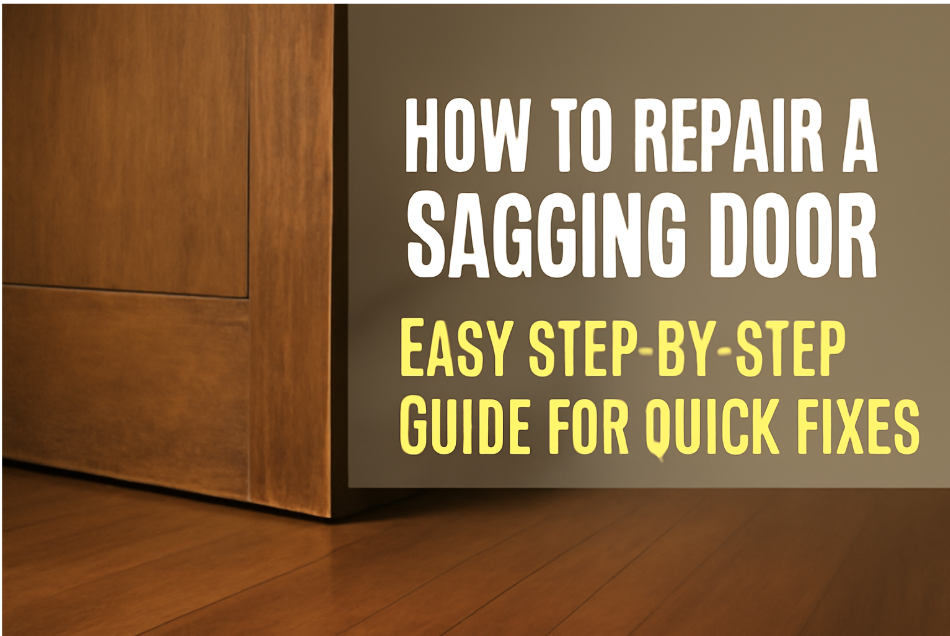
How to Repair a Sagging Door: Easy Step-by-Step Guide for Quick Fixes
Is your door dragging on the floor or refusing to close properly? 
In this easy-to-follow guide, we’ll walk you through the simple steps to fix your sagging door quickly and effectively, saving you time and money. Whether it’s worn-out hinges, improper installation, or house settling that’s causing the issue, we’ll show you exactly what needs to be done.
No experience required! By the end of this article, you’ll feel confident in your ability to restore your door to perfect working condition. Let’s dive into the solution and get your door working like new again!
Table of Contents
ToggleUnderstanding the Causes of a Sagging Door
A sagging door can be more than just an inconvenience—it can impact your home’s security and efficiency. But what exactly causes a door to sag in the first place? 
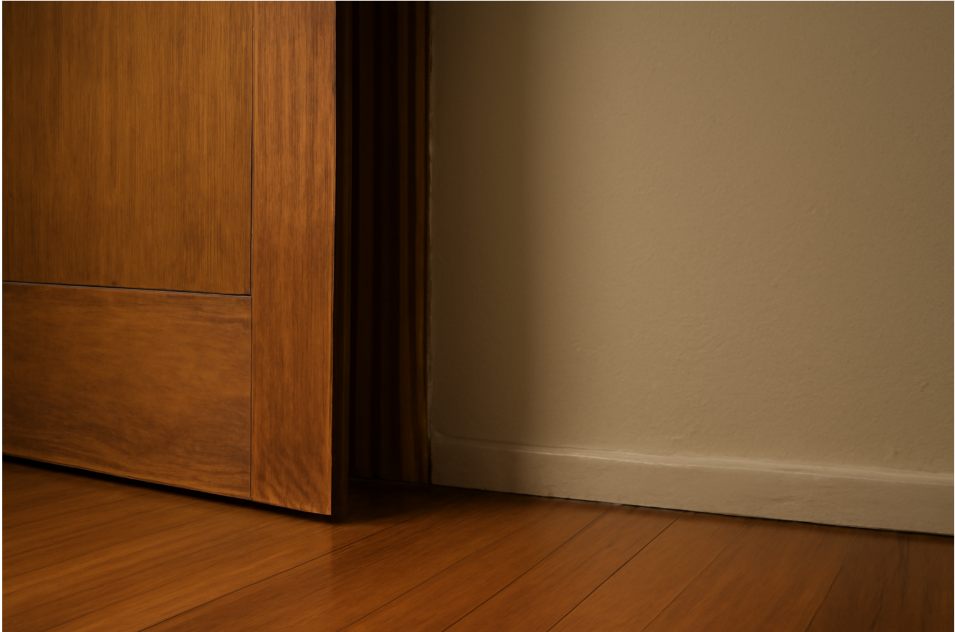
1. Worn-out Hinges
Over time, the hinges on your door can wear out from constant use. This is one of the most common reasons doors start to sag. When hinges become loose or damaged, they can no longer support the weight of the door properly, causing it to droop or misalign.
2. Improper Installation
If your door was installed incorrectly, it may have been misaligned right from the start. Even a small error during installation can cause the door to slowly shift out of position. This is especially true if the frame wasn’t squared properly, leading to a sag over time.
3. Humidity and Weather Changes
Wooden doors are particularly sensitive to changes in temperature and humidity. When exposed to high moisture levels or extreme heat, the wood can expand or contract, causing the door to warp. This shift in shape can create the perfect conditions for sagging.
4. Heavy Door
If your door is too heavy for its hinges or frame, the extra weight can slowly pull it out of alignment. This is especially common
Tools and Materials You’ll Need
Before diving into fixing that sagging door, it’s important to gather the right tools and materials. Fortunately, you don’t need a professional toolkit—most of these items are common household essentials. Let’s go over what you’ll need to get the job done quickly and effectively!

1. Screwdriver (Flathead and Phillips)
A basic screwdriver set is crucial for adjusting the screws on your door hinges. Depending on your door’s hardware, you may need a flathead or Phillips screwdriver. Tightening or replacing screws is one of the first steps in fixing your sagging door.
2. Wood Shims
Wood shims are small wedges that help lift the door back into place when it’s sagging. These are especially useful if you need to raise the door slightly to realign it. They’re inexpensive and easy to find at most hardware stores.
3. Hammer
You’ll need a hammer to gently tap the shims into place and to help with any nails that need adjustment. It’s best to use a light touch so you don’t damage your door frame.
4. Level
A level is your best friend when making sure the door is perfectly aligned. It ensures the door is hanging evenly, both vertically and horizontally. Using a level will help you avoid further sagging down the line.
5. Replacement Hinges (If Necessary)
If the existing hinges are worn out or damaged, it’s a good idea to replace them. A set of heavy-duty replacement hinges can restore stability to the door and prevent further sagging. These can be found easily in most hardware stores.
6. Drill and Screws
In case you need to remove and replace hinges, a drill and screws are necessary. A drill allows you to install new screws more efficiently, especially if the old ones have stripped or rusted.
Step-by-Step Guide to Fixing a Sagging Door
Ready to fix that sagging door? 
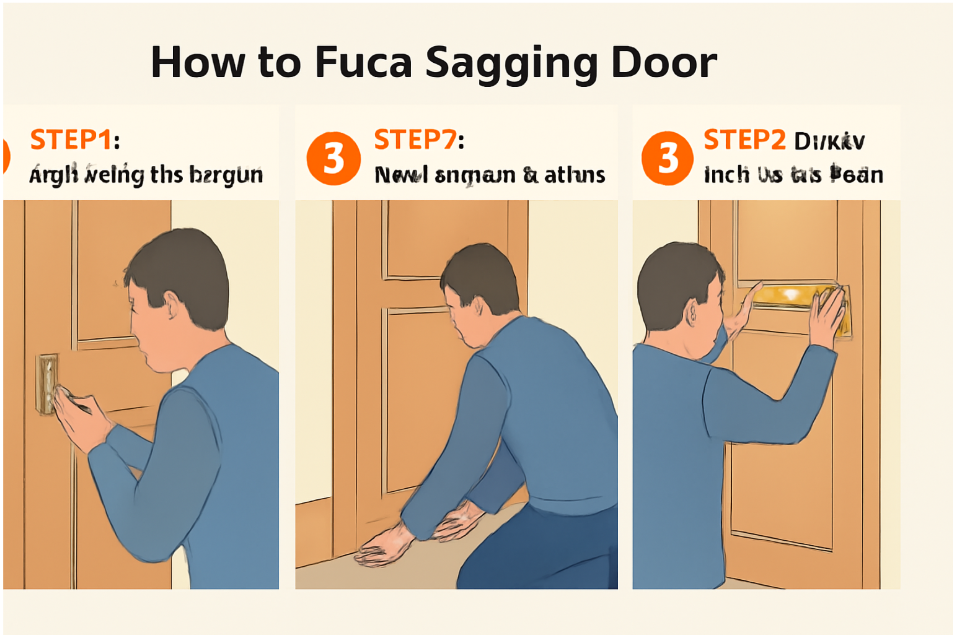
Step 1: Inspect the Door and Frame
Start by closely examining the door and its frame. Look for any visible gaps, misalignments, or worn-out hinges. Is the door scraping the floor or swinging unevenly? Check the hinges to see if they’re loose or damaged, and use a level to ensure the door is hanging straight.
Step 2: Tighten or Replace the Hinges
If your hinges are loose, the door will sag more easily. Use a screwdriver to tighten any screws on the hinges. If the screws have stripped or the hinges are too worn, it might be time to replace them. To do this:
- Remove the old hinges using a screwdriver.
- Attach new hinges by aligning them carefully with the existing screw holes.
- Screw them in tightly to secure the door.

Step 3: Lift the Door Using Shims
If tightening the hinges doesn’t fully fix the issue, you may need to lift the door back into place using wood shims. Here’s how:
- Insert Shims Under the Door: Gently lift the door (with help, if needed) and slide shims under the door at the hinge side. This will lift the door and help realign it.
- Trim the Shims: Once the door is aligned, use a saw or utility knife to trim the excess shim material. Be sure not to leave any shims sticking out—everything should be snug and secure.

Step 4: Check the Door Frame
In some cases, the problem may lie with the door frame itself. If the frame is warped or loose, the door won’t align properly, no matter how much you adjust the hinges. Here’s how to check:
- Examine the Frame for Shifting: Look closely to see if the frame has moved out of place or if any sections are cracked.
- Reinforce with Wood Glue: If the frame seems weak, apply wood glue to any cracks and let it dry before reattaching the door.
- Secure the Frame: If necessary, use screws to fasten the frame more securely.
Step 5: Test the Door
Once you’ve tightened the hinges, used shims, and reinforced the frame (if needed), it’s time to test the door:
- Open and close the door several times to make sure it swings freely and doesn’t scrape the floor.
- Double-check with a level to confirm that the door is properly aligned.
If everything feels smooth and the door is no longer sagging, congratulations! 
Common Mistakes to Avoid When Repairing a Sagging Door
Fixing a sagging door is straightforward, but it’s easy to make mistakes along the way. To ensure a smooth and effective repair, let’s go over some common pitfalls you should avoid. These tips will help you achieve a lasting solution without causing more issues.
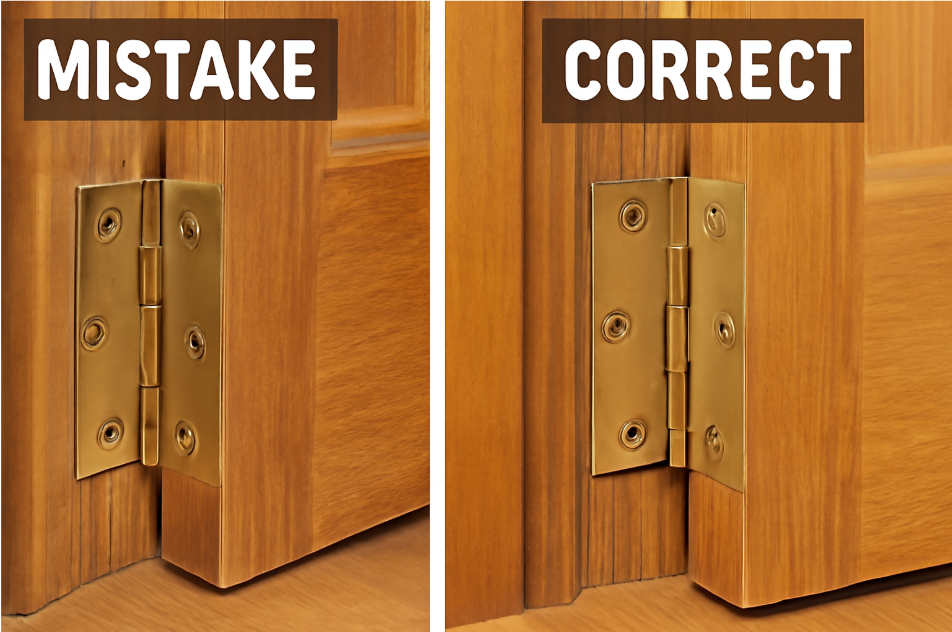
1. Over-tightening the Hinges
It’s tempting to really tighten those screws to make sure the door stays in place, but over-tightening can actually do more harm than good. It can cause the wood around the hinges to crack or even strip the screws, making it harder to fix the door in the future.

2. Using Too Many Shims
Shims are essential for lifting the door back into place, but adding too many can cause the door to misalign or make the gap too wide. This can lead to a door that still doesn’t close properly or one that sticks when opening and closing.

3. Ignoring the Frame
Sometimes, the problem isn’t just the door—it’s the frame itself. If the door frame is loose or misaligned, tightening the hinges or using shims may not fix the issue. In fact, it can make the problem worse by forcing the door to hang improperly.

4. Not Checking the Door’s Alignment Frequently
It’s easy to think a few quick adjustments are enough, but skipping the step of double-checking your work can lead to problems down the road. The door might still appear aligned but could sag again after some use.

5. Failing to Replace Worn-Out Hinges
If your door’s hinges are old and damaged, simply tightening them or adding shims won’t solve the issue in the long run. Worn-out hinges won’t provide the support your door needs, leading to more sagging over time.

6. Rushing the Process
Fixing a sagging door might seem like a quick task, but rushing through it can lead to mistakes that will cost you more time later. Skipping steps or failing to assess the problem properly can result in a temporary fix, not a permanent solution.

Tips for Preventing Future Sagging
Now that you’ve successfully repaired your sagging door, it’s important to take steps to prevent it from happening again. With a little maintenance and care, your door can stay aligned and functional for years. Here are some practical tips to keep your door from sagging in the future.
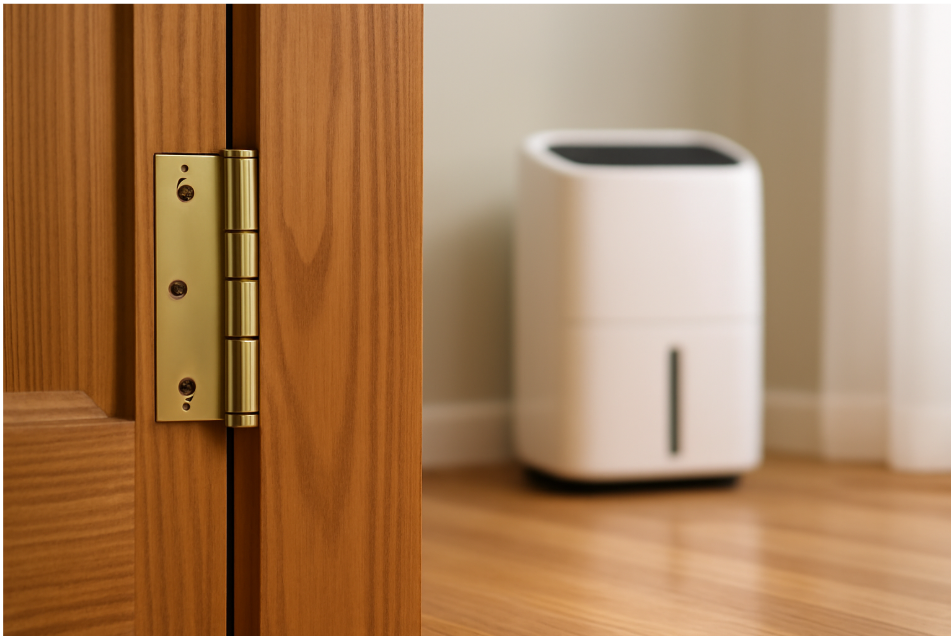
1. Regularly Tighten the Hinges
Over time, the screws on the hinges can loosen, causing the door to sag. It’s a good idea to periodically check and tighten the hinge screws to ensure the door is securely attached to the frame.

2. Control Humidity Levels
Wood doors are especially prone to warping due to changes in humidity. When the wood absorbs moisture, it can expand, causing the door to shift or sag. To prevent this, try to maintain a consistent indoor humidity level.

3. Lubricate the Hinges
Lubricating the hinges will help them move smoothly, reducing friction and wear over time. This simple step can prevent the door from sagging due to hinge strain.

4. Inspect the Door Frame Periodically
The door frame can shift or become damaged, which may lead to sagging doors. Regularly inspect the frame for any signs of warping, cracks, or loose screws.

5. Avoid Overloading the Door
If you have a heavy door, it’s more likely to sag under its own weight. To prevent this, ensure the door is properly supported by heavy-duty hinges that can handle the weight. If needed, replace the hinges with stronger ones.

6. Install Extra Support for Heavier Doors
For larger or heavier doors, consider installing additional hinges or support brackets. This extra reinforcement will help prevent the door from sagging due to uneven weight distribution.


Congratulations on fixing your sagging door! 
Remember, regular maintenance—like tightening hinges, checking the frame, and controlling humidity—will help prevent future sagging. With just a little ongoing care, your door will stay in top shape for years to come.
If you ever find yourself dealing with door issues again, now you have the knowledge to handle it confidently. Don’t hesitate to revisit this guide anytime you need a refresher. Keep your home functioning well and looking great with easy, DIY fixes!
Have you fixed a sagging door before? Share your experience or ask any questions in the comments below. We’d love to hear from you!
Frequently Asked Questions (FAQs)
1. Why is my door sagging?
A sagging door is typically caused by loose or worn-out hinges, improper installation, humidity changes, or house settling. Over time, the weight of the door can cause the hinges to loosen, or the door frame may shift due to environmental factors.
2. How can I tell if my door is sagging?
You can tell if your door is sagging if it doesn’t close properly, scrapes the floor, or has uneven gaps around the edges. Using a level can help confirm if the door is misaligned.
3. Can I fix a sagging door myself?
Yes, fixing a sagging door is a DIY task that you can easily handle with basic tools like a screwdriver, hammer, shims, and a level. Most issues like loose hinges or slight misalignments can be resolved with simple adjustments.
4. What tools do I need to fix a sagging door?
You’ll need a screwdriver (flathead and Phillips), wood shims, a hammer, a level, replacement hinges (if necessary), a drill, screws, and wood glue (optional). These basic tools will help you tighten hinges, lift the door, and reinforce the frame.
5. How do I fix a sagging door without removing it?
To fix a sagging door without removing it, start by tightening the screws on the hinges. If that doesn’t work, use shims to lift the door back into place. Finally, check the frame for any loose sections and reinforce them if needed.
6. How do I know if the door frame is causing the sagging?
If tightening the hinges and using shims doesn’t fully fix the problem, the door frame could be misaligned or damaged. Check for any visible cracks or movement in the frame, and consider reinforcing it with wood glue or screws.
7. What if replacing the hinges doesn’t work?
If replacing the hinges doesn’t solve the sagging, the issue might be with the door frame or the door itself. Ensure the frame is secure and aligned. If needed, consult a professional for a more thorough repair.
















